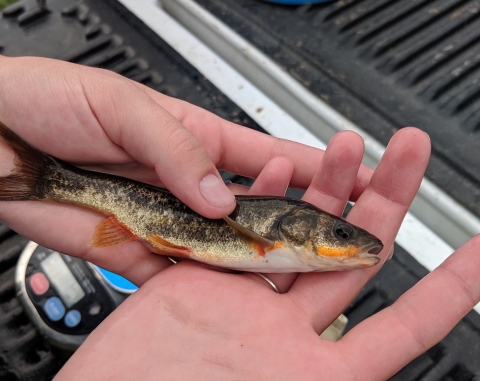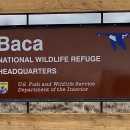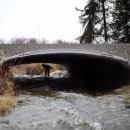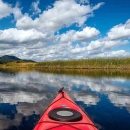Rio Grande Suckers and Rio Grande Chubs Monitoring and Conservation
Rio Grande Suckers, a state endangered fish species, and Rio Grande Chubs are found in small streams in the San Luis Valley in Colorado. Both species have been petitioned for listing under the Federal Endangered Species Act. The Baca National Wildlife Refuge is home to rare native populations of both species. Colorado Fish and Wildlife Conservation Office staff partners with the National Wildlife Refuge System and Colorado Parks and Wildlife to monitor these fish. Sampling efforts spanning from 2015-present document population numbers, movement behavior and provide insight into their life history characteristics.
Colorado Fish and Wildlife Conservation Office is also studying the movement of these species in the water system on Baca National Wildlife Refuge. Small electronic tags inserted into the fish are read by remote detection antennas placed throughout the waterways on the refuge. This will help us understand how fish are moving and guide water management decisions to benefit these species. Under the National Fish Passage Program, the Colorado Fish and Wildlife Conservation Office has replaced several stream structures on the refuge to improve fish passage fish passage
Fish passage is the ability of fish or other aquatic species to move freely throughout their life to find food, reproduce, and complete their natural migration cycles. Millions of barriers to fish passage across the country are fragmenting habitat and leading to species declines. The U.S. Fish and Wildlife Service's National Fish Passage Program is working to reconnect watersheds to benefit both wildlife and people.
Learn more about fish passage and remove barriers, allowing fish greater access to habitat within their indigenous range. Our staff attends the annual Sucker and Chub Conservation Team Meeting and provides their research to other fisheries managers from state and federal agencies across the southwest.






